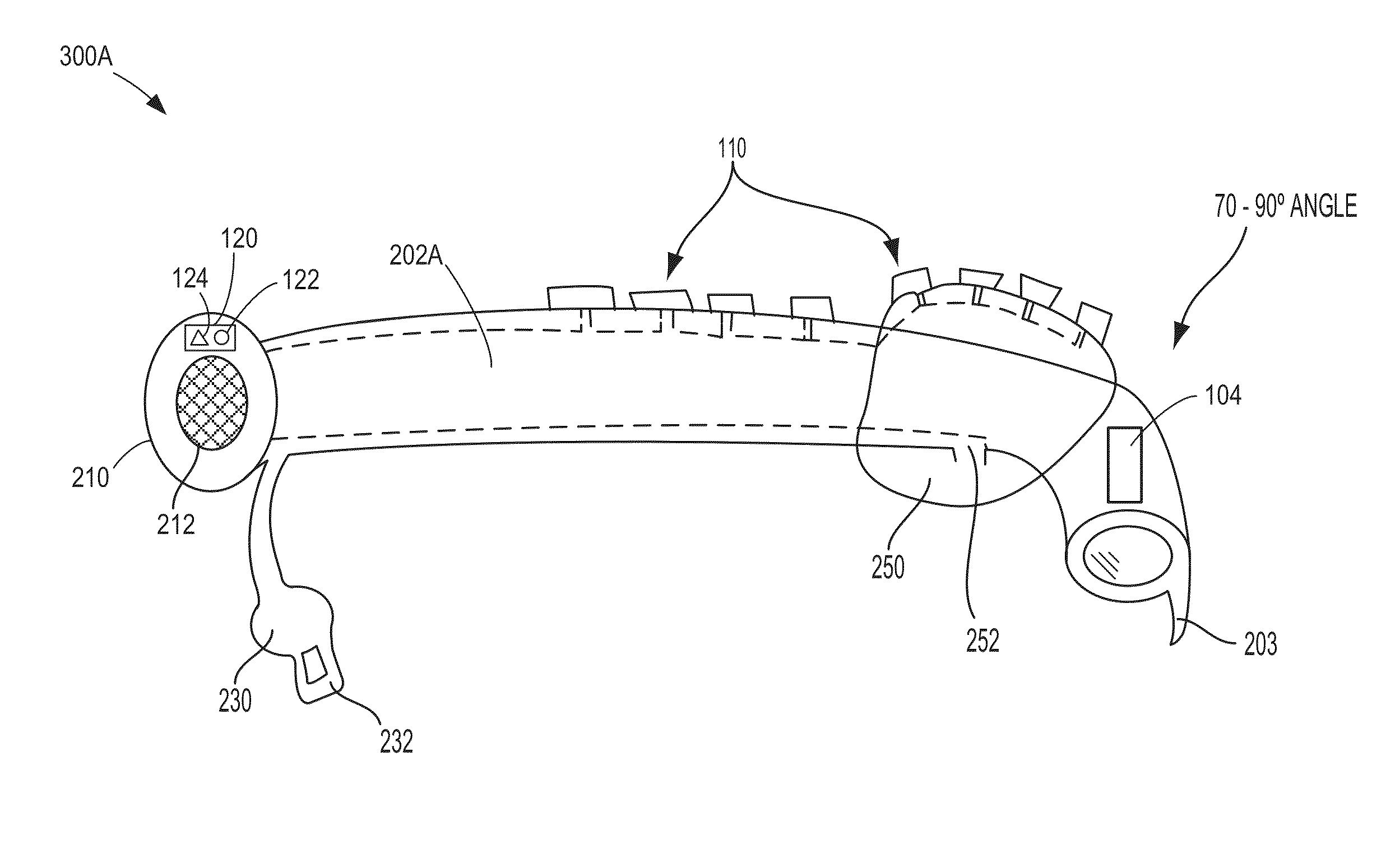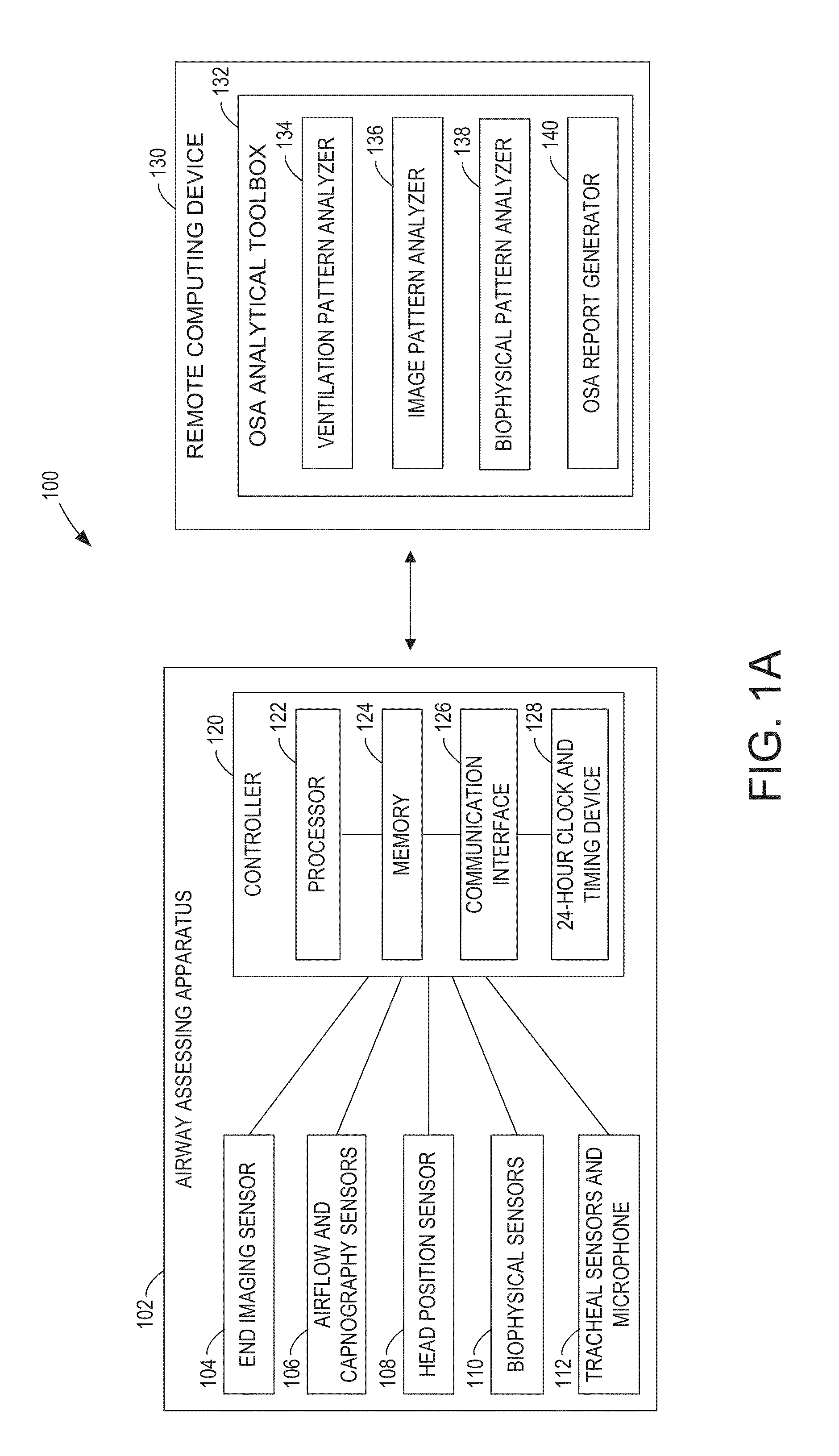Systems, methods and devices for diagnosing sleep apnea
a technology for sleep apnea and systems, applied in the field of systems, methods and devices for diagnosing sleep apnea, can solve the problems of increasing the difficulty of diagnosis, cumbersome equipment, and undiagnosed, and achieve the effect of enhancing the viewing of the airway and enhancing the detection of airway patency
- Summary
- Abstract
- Description
- Claims
- Application Information
AI Technical Summary
Benefits of technology
Problems solved by technology
Method used
Image
Examples
first embodiment
[0032]FIGS. 2A and 2B show example embodiments of OSA diagnostic system 100 in accordance with the present disclosure. For example, FIG. 2A shows airway assessing apparatus 102A with nasal tube 202A inserted into nasal cavity 204. Nasal tube 202A may be a flexible hollow tube adapted for insertion into the nasal cavity. In some examples, nasal tube 202A may include a soft, bendable beak-like tip 203 or other configuration that allows for downward deflection and easier insertion and placement of the device within the cavity above constriction point 206. In the first embodiment shown, airway assessing apparatus 102A includes nose stopper 210 along with mesh 212 that enables air to pass through the hollow device and into the airway. The device may also include pilot balloon 230 with air injection port 232 (or valve) that is used for inflating balloon 250 through inflation opening 252. In the embodiment shown, inflatable balloon 250 may be included along with the nose stopper to anchor ...
second embodiment
[0034]FIG. 2B shows airway assessing apparatus 102B that also includes nasal tube 202B with a soft, bendable end and a flexible beak-like tip 203 for easier insertion and downward deflection to increase the ease of placement within nasal cavity 204 above constriction point 206. In one embodiment, beak-like tip 203 is integrated into the bendable nasal tube and comprises a piece of plastic having the contour of a beak. Thereby, the beak-like tip and nasal tube may form a single, continuous structure. However, this is non-limiting and in other embodiments, the beak-like tip, which is soft and flexible, may also comprise a separate tip configured for addition to the end of the nasal tube and / or may be made of other materials (e.g., rubber) so long as the material is insertable into the body for long periods of time. As noted above, the tip allows for easier and nontraumatic insertion of the tubular airway assessing apparatus into the nasal cavity, since traumatic insertion (and bleedin...
PUM
 Login to View More
Login to View More Abstract
Description
Claims
Application Information
 Login to View More
Login to View More - R&D
- Intellectual Property
- Life Sciences
- Materials
- Tech Scout
- Unparalleled Data Quality
- Higher Quality Content
- 60% Fewer Hallucinations
Browse by: Latest US Patents, China's latest patents, Technical Efficacy Thesaurus, Application Domain, Technology Topic, Popular Technical Reports.
© 2025 PatSnap. All rights reserved.Legal|Privacy policy|Modern Slavery Act Transparency Statement|Sitemap|About US| Contact US: help@patsnap.com



